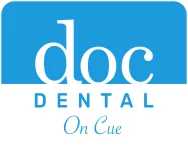The Vital Reasons Why You Should Replace Missing Teeth

The goal of modern dentistry is for each and every patient to keep all their teeth for their entire lifetime. As dental health awareness and dental technology have advanced over the last half century, we now see fewer older people who are missing all their teeth (a condition dentists call edentulism). Still, we find that people may loose a tooth or a few and not think much of it. The reality is that a missing tooth is far more than just a gap in your smile: it can have serious oral health and psychological effects down the line.
Bones are similar to muscles in that if you don’t stimulate them, they will start to atrophy. The bones in your jaws are stimulated when the force of biting and chewing travels down the root of your teeth into the bone. When you lose even a single tooth, the bone under where the tooth used to be starts to weaken and decrease in density. If you are missing all the teeth on your upper or lower jaw, this effect is even more pronounced, and can lead to the face having a sunken and shortened appearance that makes a person look much older.
Patients who have lost teeth also experience negative effects on their health and quality of life. Missing teeth can make it hard for people to eat healthy foods that might be difficult to chew, such as nuts, vegetables and meats. As a result, many patients with missing teeth also suffer from poor nutrition. Missing teeth can also have social consequences, as patients who are self conscious about their appearance or eating ability may avoid social activities that they once enjoyed.
If you are missing teeth it’s very important that you look into your options for tooth replacement as soon as possible. The longer you wait to replace a tooth, the worse your problems with bone loss and other consequences will be.
Best options for replacing teeth:
Dental Implants
Dental implants are by far the best option for replacing teeth. A major reason for this is they replace both the tooth root and the crown. The fact that the replacement tooth is imbedded in the bone helps prevent further bone loss. The implant is an artificial tooth root that is anchored in the bone. The crown is a porcelain or ceramic tooth that is then attached to the metal implant using dental cement. Essentially, the only drawback to dental implants is the healing time, which can be as long as three months. But the result is permanent teeth that will last the rest of your life and be as functional as if you never lost your natural teeth. Plus, unlike other tooth restoration options, implants don’t ever have to be replaced or adjusted, so you only have to pay for them once.
Bridges
Bridges are replacement teeth that are held in place by attaching to neighboring healthy teeth. While traditionally bridges have been made from gold, ceramic, or alloys, today the preferred kind of bridge is made entirely of ceramic. This provides the most natural-looking result. A ceramic bridge consists of a false tooth with hollow tooth crowns on either side. These hollow crowns are then cemented to nearby healthy teeth that have been reshaped and the false tooth in the middle fills the gap left by your missing tooth.
Bridges can help prevent bone loss in your jaw and also keep your remaining teeth from shifting into the gap, which can misalign your bite, make chewing difficult and even affect your appearance. While bridges are durable and long-lasting, most of the time they do need to be replaced eventually. Bridges are also a less desirable option than implants because they involve taking structure away from healthy teeth in order to attach the bridge, so the loss of one tooth ends up affecting several teeth.
Partials and Dentures
Dentures are dental appliance that replace an entire arch of teeth (i.e. all the teeth on your upper jaw or lower jaw). Dentures consist of a plate that holds false teeth and gums that are held in place by fitting over your gums and the power of suction. Dentures are usually made of a durable resin material that is colored to look like your own natural teeth. Partials are used for patients who are missing a few, but not all, of the teeth in an arch. They consist of a plate that fits against the roof of the mouth, false teeth, and clips that attach to existing teeth to hold the partial in place.
While dentures and partials will restore the appearance of your smile and some of its function, they do not help prevent bone loss due to missing teeth. Even if you wear dentures the bones of your jaw will continue to diminish and change shape. As a result, you may need to have your dentures adjusted or replaced, as the original bone structure they were designed for will have changed. This is why, despite having a lower upfront cost, dentures can end up costing more than dental implants in the long run.
If you are missing teeth or know you are at risk of losing teeth, please don’t hesitate to talk to us about your options.
